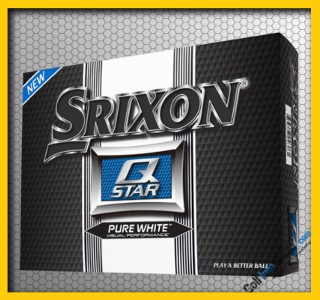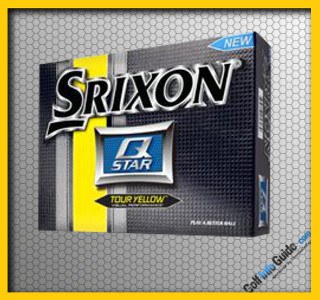
Ball tested: Srixon Q-STAR
Category: Premium
Specs: Construction – Two-piece; Cover – Rabalon and Pana-Tetra blend; Core – Energetic Gradient Growth; Dimples / Pattern – 344 “speed” dimples
Compression: Mid
Price as tested (new): $24.99 per dozen
Ball notes: Srixon already had a winner on its hands with the 2012 Q-STAR, which proved highly popular among avid low- to mid-handicap players. Clearly unafraid to mess with success, the company added its new, proprietary “Spin Skin” to the 2013 version – and based on early reviews, made a good thing even better.
Let’s get some technical info out of the way. First, STAR is an acronym for Spin, Trajectory, Acceleration and Responsiveness. For 2013, Srixon added 20 dimples with the goal of reducing drag and increasing air time. Compression for the Q-STAR is 75, quite low, with the company recommending the ball for anyone with a swing speed between 70 – 108 mph – a rather broad range.

Now about that “Spin Skin.” It’s basically a coating applied over the cover, purported to generate 20% more friction on shots played from within 30 yards of the hole. Srixon also uses the material on its “tour-level” Z-STAR models, the ball of choice for Keegan Bradley, Graeme McDowell and Inbee Park, among other pros.
The new Q-STAR earned a gold medal from Golf Digest in its 2013 Hot List testing, placing it alongside competitors such as the Titleist NXT Tour and DT SoLo and Bridgestone’s e5 and e6. For good measure, Q-STAR is also available in yellow.
Sound and feel: After a few shots, we had to double-check our notes to make sure this was a two-piece ball. It sure doesn’t feel like it. The Q-STAR is as soft as most multi-layer balls and softer than many, with a sound that’s pleasantly muted but not too squishy.

Off the tee: High marks for the Q-STAR in this department. It launched high but displayed a stable, penetrating flight. Distance results were right there with other “premium” models, perhaps better than most. Most impressively, the Q-STAR went toe to toe with the Bridgestone e6 for overall accuracy, yet we were still able to work it side to side just enough to fit drives around doglegs (on good swings, of course).
From the fairway / rough: Still searching for the Q-STAR’s Achilles heel, we didn’t find it in the approach game. Iron shots from a variety of yardages showed medium trajectory and good controllability, with just the right amount of spin on wedges.
Around the green: Finally, the moment of truth. Was this Spin Skin a real innovation, or mere marketing gobbledygook designed to mask a performance weakness? The verdict: Thumbs up. Q-STAR not only feels great on chips and pitches, it delivers honest-to-goodness spin and control from tight lies and light rough. Bunkers, too. We haven’t played a premium category ball that beats Q-STAR for short game execution.
Bottom line: Simply put, Q-STAR is one of the best values in golf balls today. It earns high scores in every performance category, not only matching or beating competitors but ranking alongside tour models in many of them. Sometimes, it pays to fix what ain’t broken.
Golf Ball Videos:
– Compression Video
– Spin Video
– Dimples Video
– Golf Ball Brands Video
– Titleist Video
– Understanding Spin Video
Categories Explained:
Value/Recreational/Distance – Designed for mid- to high-handicap golfers with swing speeds below 90 mph; typically feature two-piece construction and firm covers; promote greater distance over high spin rates. Examples: Pinnacle Gold, Slazenger RAW Distance
Premium – Designed for low- to mid-handicap golfers with swing speeds of 90-99 mph; typically feature multi-layer construction and medium-soft covers; happy medium between Value/Recreational and Tour categories for distance and spin qualities. Examples: Titleist NXT Tour, Callaway HEX Diablo
Tour/Advanced/Performance – Designed for low-handicap and professional golfers with swing speeds in excess of 100 mph; typically feature multi-layer construction and soft covers; promote greater spin rates and enhanced feel over distance. Examples: Titleist ProV1, Bridgestone Tour B330





